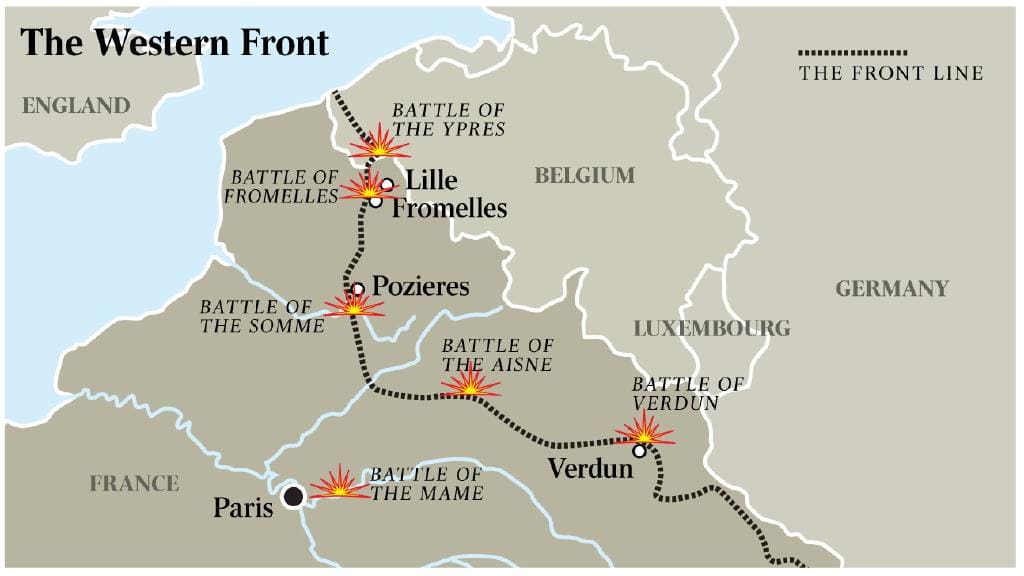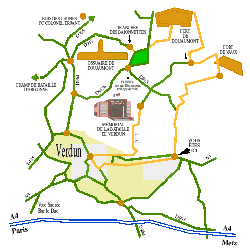

Verdun lay vulnerable to attack from three sides and it would have been much practical to defend the woods immediately behind it. #2 Verdun was chosen for its historical significanceįalkenhayn chose Verdun as the focus of the German offensive because it was historically important to the French as its forts had been key assets in wars since ancient times. Hence he wanted to launch a massive German attack on France to kill so many of their men that it would open an opportunity to defeat Britain or to force them to negotiate. He believed Britain formed the foundation of the Allied effort but it lay behind the shield of the French army and could be defeated only after this shield was broken. German Chief of General Staff, Erich von Falkenhayn, came up with the plan to attack Verdun in France. Within these two days, the German army managed to capture Bois des Caures and the village of Haumont, and the French had repelled an attack on the village of Bois de l’Herbebois.#1 The chief architect of the Battle of Verdun was Erich von Falkenhayn German Chief of General Staff – Erich von Falkenhayn After the fall of Bois des Caures, the Germans gave Driant a honorable burial, along with writing to his widow to reassure her that he was buried with respect. Only 116 Chasseurs survived and escaped after the grand defense. In the finale moments, Colonel Driant ordered the remaining survivors to retreat, in which during the action, the Colonel was killed. The man leading the defense was Colonel Émile Driant, or commonly referred to as “Father Driant”, whom had previously warned the French Minister of War and other officials that Verdun was the next target of a German attack, but was dismissed… Leading the French Chasseurs (Hunters/Light Infantry), Driant and his men managed to hold for two days before the German infantry outflanked their positions. However, they were greeted by heavy resistance from the 56th and 59th French Chasseur Battalions in the woods near the village of Flabas.

One of the German infantry units were on the path to take an area, known as Bois des Caures. The next day, February 22nd, the German main assault began with advancing 3 miles in.


the German storm-troopers had begun their advancement with quick shock force tactics, with the use of flamethrowers to clear out the remaining defenders from the bunkers and trenches. Many French troops, and often entire platoons, perished from being buried alive under the earth turn over.īy 4:00 P.M. At the end, the German field artillery had launched over 1,000,000 shells. All as a method for the German field observers to point out where the heaviest of French activity is before resuming the barrage. Fooling the French troops, they scrambled out of hiding and started search and rescue for men who got buried alive under mud and debris. Shelling around an area of 19 miles long, and 3 miles wide area. the German 5th Army with over 800 artillery pieces, began a 10 hour bombardment on the French fortifications of Verdun. The order of battle was given the name Operation Gericht, or “Operation Judgement”. Hoping to inflict mass casualties upon the French army, and breaking the people’s will to fight in order to claim victory in the Western theater. The battle plan was conducted by General Erich von Falkenhayn, which was designed to be a battle based on attrition. As for the Germans, it was vital to breakthrough Verdun and continue their advancement toward Paris. Along with that, Verdun was one of the last few strongholds to have fallen during the Franco-Prussian War (1870-1871), therefore the French, not wishing for history to repeat itself, made it vital to hold the city at all cost. Marking the end of Carolingian Civil War, and dividing the Empire into three separate kingdoms, resulting both countries for having deep roots with the Carolingian dynasty. It held a historical significance for both the French and Germans during the war, for the Treaty of Verdun took place there in 843 A.D. The ancient city of Verdun is located in northeastern France along the Meuse river. Considering that I’ve been having a difficult time figuring out what to write about next for this blog, I thought I just go with writing about this deadly, long-lasting engagement between the French Third Republic and the German Empire during the Great War. The men who participated there nicknamed the battle as the “Meat-Grinder” or commonly the “Furnace”. Being among the bloodiest battle in modern history, approximately 750,000 French and Germans were killed in just 299 days, averaging 70,000 casualties per month. On this day, 104 years ago, marked the first day of the longest battle of World War I, known as the Battle of Verdun.


 0 kommentar(er)
0 kommentar(er)
